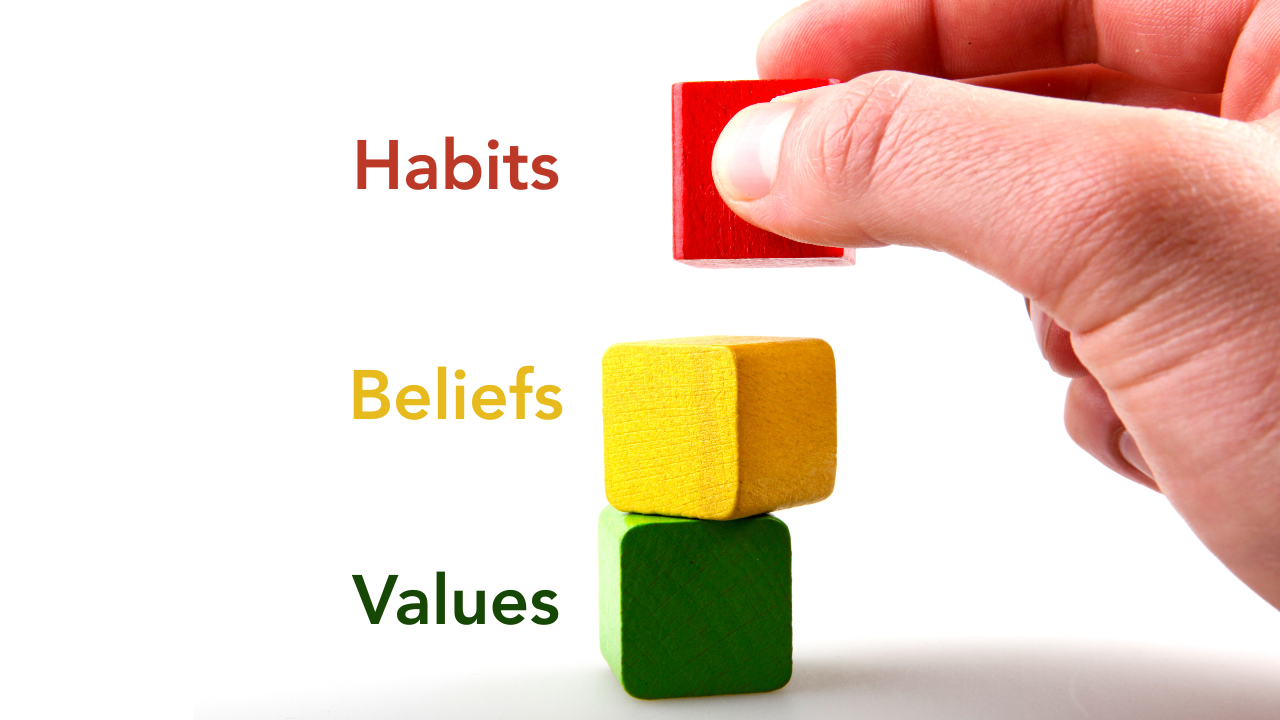Culture is a Construct: Habits, Beliefs & Values
I was recently introduced to the fascinating book, The Surprising Power of Liberating Structures by Henri Lipmanowicz and Keith McCandless from a friend. A key takeaway is that company and even family culture isn’t something that’s simply pronounced like a declaration from the top. It’s lived each and every day. When someone says to a new hire — “That’s just the way we do things around here.” That’s your real culture.
Elements of Culture
There are three primary elements that define a culture. Beliefs are the unexamined truths and the assumptions that are taken for granted. Values are the ideals that people say they stand for and that they use to justify their actions. Habits are the observable actions and interactions that happen every day. Oftentimes, beliefs, values, and habits are not in alignment. Cultural statements proudly displayed on a website or employee handbook are not always what people experience in their daily interactions.
Habits Define Culture
The daily habits of an organization or family leader define its culture. Furthermore, the day-to-day interactions of middle management define the cultures of their sub-teams, irrespective of what the website, employee handbook, or stated values of the CEO.
Most organizations try to impose culture like it can be dictated with messaging, policies, posters, catchy tag lines, and other artificial tools. Thing is, without commensurate habitual changes at every organizational level, none of these catch-phrases stick.
Authentic cultural shifts begin to take place when you begin to liberate people at all levels. Empower them to interact with one another in ways that minimize hierarchy and maximize opportunities to meaningfully change habits.
How to Start a Culture Shift
You know that the culture in your organization, your group, your family needs to change. But how can you do that most effectively? First, define your values so you can objectively examine how well (or not) they are being reproduced by your daily habits and those of your team.
Observe the things that you do that either reflect or contradict your stated values. Think about how these values are expressed through the actions you take and start to make small changes to bring them into alignment.
Consider following some of the Leadership Principles outlined in The Surprising Power of Liberating Structures. These include:
Practicing deep respect for people and local solutions
Never starting without a clear purpose
Building trust as you go
Learning by failing forward
Practicing self-discovery within a group
Amplifying freedom and responsibility
Emphasizing possibilities. Believe before you see proof!
Invite creative destruction to make space for innovation
Engage in seriously playful curiosity
Include and unleash everyone
By applying some of these Leadership Principles within your organization and finding alignment with your values and habits, incremental cultural changes will begin to take shape.
Click here to see more on Culture and DOWNLOAD A FREE RESOURCE for you to reflect on your current workplace culture and its characteristics!
This article was originally published on Medium. I’m sharing it here so my community has one place to access all of my writing and resources.

